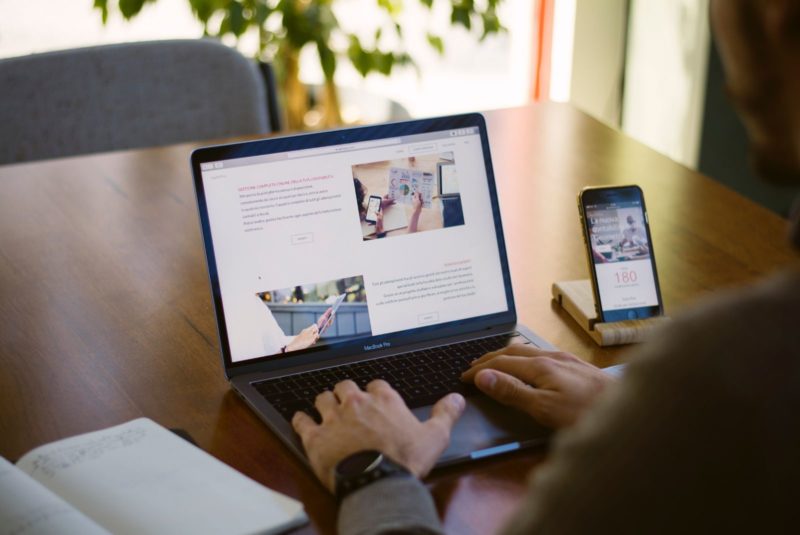
Across Africa, a financial revolution is unfolding. Mobile money is putting the power to manage finances right in people’s pockets. This isn’t some futuristic dream; it’s the reality for hundreds of millions thanks to the rise of mobile money solutions.
The 2024 State of the Industry Report on Mobile Money (SoTIR) by GSMA paints a compelling picture of this transformation. In 2023 alone, a staggering 1.75 billion accounts were registered globally, with Sub-Saharan Africa leading the charge, accounting for over 70% of the total growth in registered accounts in 2023. This highlights the immense potential of mobile money to drive financial inclusion and economic growth in Africa.
Join me as I chat with Ashley Onyango, a mobile money expert at GSMA. We’ll be diving into the SoTIR report to uncover the latest trends and insights on how mobile money is changing the financial landscape. Released on the 19th of March, 2024, This annual report serves as a vital compass, providing in-depth analysis and key insights into the growth and trends shaping this transformative financial technology.

Meet Ashley Olson Onyango
Ashley Olson Onyango is the Head of Financial Inclusion and AgriTech at GSMA’s Mobile for Development team. With over a decade of experience across sub-Saharan Africa, Ashley drives innovation in digital technology to reduce inequalities. She oversees the Mobile Money program, enhancing its utility and sustainability, and leads the AgriTech program, scaling impactful digital solutions for smallholder farmers.
Ashley has a track record of championing financial inclusion and gender lens investing, collaborating with organizations like Root Capital, Africa Enterprise Challenge Fund, Mastercard Foundation, and Financial Sector Deepening Africa.
A Conversation with Ashley
Beyond the numbers, what intrigued or stood out to you the most about the mobile money industry’s growth trajectory in 2023?
Many positive trends emerged from the mobile money space in 2023. But given our desire to see mobile money being used more for everyday transactions, it was pleasing to see that international remittances and merchant payments were among the fastest-growing mobile money use cases in 2023. Transaction values for international remittances grew by one-third (year-on-year) to almost $29 billion, while merchant payments grew to around $74 billion in 2023 – a 14% year-on-year rise.
Based on your experience at GSMA, what are some misconceptions people commonly have about the mobile money industry?
Mobile money is more than just payments. Perhaps this is not a misconception, but more a case of what mobile money has always been used for. Beyond that, while productive credit has been readily available via mobile money services, more mobile money providers are beginning to offer more savings and insurance products.
In Botswana, for example, several thousands of customers use mobile money to save money in the absence of other financial institutions. This is particularly impressive as no interest is payable in Botswana on mobile money balances. In terms of insurance, MTN has been a leader in the mobile-enabled microinsurance space. Airtel Money has expanded its insurance offering too. This is perhaps the start of mobile money providers offering more adjacent financial services.

How does GSMA view the recent trends in mobile money adoption and active use? The report highlights a 12% increase (1.75 billion) in registered mobile money accounts in 2023, which is still significant growth. However, this is a lower rate compared to previous years (19% in 2021). Is this a natural progression, or are there specific factors contributing to this trend?
Adoption has continued to grow, despite a slowdown. Let’s remember that much of the growth between 2020 and 2022 was driven by the COVID-19 pandemic. During this time, there was an increase in demand for digital payments. The industry is seeing maturity in certain regions, so this sort of trend is normal.
In terms of activity rates, it varies by region. Much of the rise in activity rates was again down to the pandemic. Things have calmed down now, while digital payment trends can also be influenced by factors other than consumer behaviour (e.g., taxation). If we put the pandemic aside, the message is a positive one: Sub-Saharan Africa, the epicentre of mobile money, had an activity rate of 27.5% in 2019. In 2023, this was 28.1%.
The rise of West Africa as a mobile money powerhouse is fascinating. What factors do you believe are fueling this rapid growth and how does it differ from East Africa’s trajectory?
I don’t want to give much on this away as SOTIR 2024 spells it out nicely in the new feature on the region. Without a doubt, an enabling regulatory environment has played an important role. Achieving financial inclusion, through National Financial Inclusion Strategies, has driven this in some cases – such as in the WAEMU region. In some markets, such as Nigeria, a range of providers – some led by MNOs, some led by fintechs – means that there is a choice of mobile money service for a large, untapped market.
The gender gap in mobile money use is still a persistent issue, except in Kenya. The report mentions a 46% gap in Nigeria. What are some of the real-world challenges holding women back from using mobile money, beyond just awareness? What concrete strategies can be implemented to close this gap?
Awareness is something we find is generally at a good level across markets. But there is a real struggle to transition from awareness to adoption, and then from adoption to regular use. In some markets, the gender gap has reduced. For example, in Pakistan, it shrank from 85% in 2022 to 71% in 2023, and from 75% to 56% in India during the same period. Some of this progress is down to a joint effort on the part of mobile money providers, governments, and other stakeholders to adapt products for women’s use (such as a debit card linked to mobile money in Pakistan). Rural skills campaigns have also been run to overcome social norms that act as barriers to women’s adoption of mobile money.

Mobile money providers are getting profitable, which is great for them. But how can we ensure these profits are also used to benefit users, especially those in underbanked areas?
Mobile money providers recognise that they still have a large target market to capture and serve. While they remain businesses, we know that they are looking at different ways of offering customers a compelling and holistic value proposition. This may often require investment, be it to improve the channels you can transact through or products on offer, or how better to serve MSMEs. We know that there are still many underserved or less-than-active users, which mobile money providers will be keen to financially include.
Interoperable transactions between banks and mobile money providers grew by 15% year-on-year to $210 billion in 2023. From your perspective, what opportunities and challenges does interoperability present for the mobile money ecosystem, particularly in terms of enhancing user experience and driving financial inclusion?
Undoubtedly, financial services operate within an increasingly interconnected global landscape, necessitating mobile money providers’ integration into this seamless environment. Enhanced interoperability not only fosters the flow of digital assets within payment ecosystems but also aligns with governmental goals for cashless economies, offering numerous advantages to users, ranging from greater convenience to positive socioeconomic outcomes.
While centralized switch solutions for interoperability are gaining traction at both national and regional levels, it is critical to recognize that there’s no one-size-fits-all approach due to variations in countries’ digital payment maturity and attributes. Engaging in dialogue with stakeholders and considering diverse perspectives is paramount in devising effective solutions, with factors such as cost, revenue, scalability, robustness, and governance playing pivotal roles. Notably, disparities in revenue streams between banks and mobile money providers, with the latter heavily reliant on payment transactions, necessitate careful consideration to avoid skewing either sector negatively.
International money transfers via mobile money are experiencing a boom, with a reported one-third increase to $29 billion. Compared to traditional banks, what specific features or functionalities of mobile money make it a more attractive option for sending money internationally, especially considering the significant growth we’ve seen?
Quite simply, mobile money as an industry has a commitment to meet SDG 10c, which is to reduce the cost of sending remittances to 3% or lower. Whereas mobile money providers are close to achieving this (3.45% in 2022), according to the World Bank’s Remittance Prices Worldwide published in 2022, banks had the highest cost of sending $200 to low- and middle-income countries at 11%. For many remittance corridors (or most), mobile money remains the cheapest, safest, and most efficient way of sending money.
Cash has been king for a long time. Do you think mobile money has the potential to one day completely replace cash, especially in smaller transactions?
No country has seen a complete replacement of cash, despite several digital payments initiatives. Cashlessness has been growing globally, with some countries doing better than others. Mobile money means that LMICs can progress as much as many countries with advanced payment systems if not even progress faster than them. If customers, as well as merchants, are continuously offered a value proposition that enables them to digitalise their transactions easily, safely, and cheaply, then there could be more potential for fewer cash-based transactions.

What do you believe are the primary driving factors behind the sustained growth of the mobile money industry?
Enabling regulation is always an important driver. Much effort has been put in by so many stakeholders to get to this point. We also acknowledge regulators and central banks that have supported the development of mobile money services. Innovation, especially around products, has meant providers are continuously thinking about offering customers value for money. And let’s not forget agent networks – these still play an important role in digitalising cash coming into the system.
Looking ahead, where do you see the biggest opportunities for mobile money to make a positive social impact in the developing world?
Good question! We’re already seeing the benefits of mobile money’s socioeconomic impact. Last year, we found that mobile money had contributed an additional $600bn in GDP between 2013 and 2022 to countries with a mobile money service. That’s an extra 1.5% boost to the GDP of these countries!
Beyond this, mobile money now contributes to 15 out of 17 of the UN’s SDGs. This is up from 13 a few years ago. Mobile money now contributes to SDG 11 – Sustainable Cities and Communities and SDG 12 – Responsible consumption and production. We hope it won’t be long before we can tell you that mobile money is contributing to all 17 SDGs. By improving access to digital payments and accelerating financial inclusion, mobile money remains a leading force in achieving the SDGs.
Read the Full Report
As we conclude, I recommend you delve deeper into the comprehensive insights provided in the State of the Industry Report (SOTIR) on Mobile Money 2024 here. Exploring this report will offer a broader understanding of mobile money data and trends, empowering individuals and businesses to navigate the evolving landscape of financial technology effectively.











